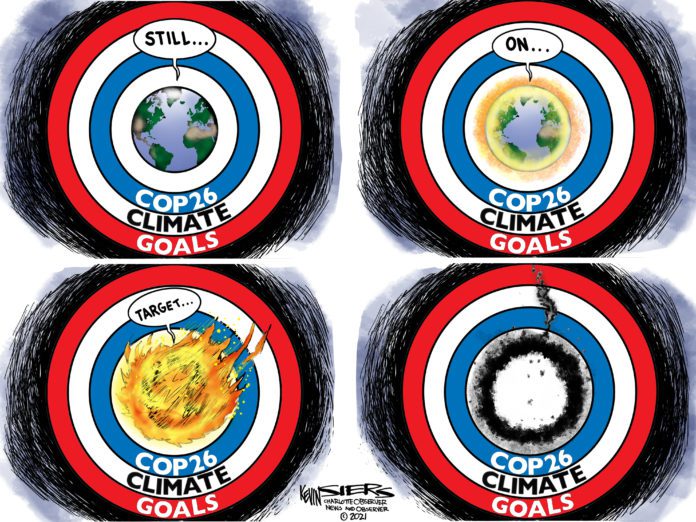 “Is this what you’ve been looking for?”
“Is this what you’ve been looking for?”
And, with that, an East Texas good ol’ boy threw the last ivory-billed woodpecker that anyone ever saw alive onto Archer Fullingim’s desk in his newspaper office in Kountze, TX, with the sneer and smirk befitting such a jerk.
It was a political statement. Fullingim backed a Big Thicket preserve – at that time in the late ‘60s maybe a national park. An endangered bird could only aid the cause.
But local loggers thought otherwise. It was their habitat destruction that hastened the bird’s demise. What’s the extinction of an entire species, the complete erasure of fluid beauty, compared to a bump on the bottom line?
I heard this account about 40 years ago; Fullingim had previously reported it in his Kountze News. But a report from the U.S. Fish and Wildlife Service issued Sept. 30 says “the last unrefuted sighting” was in 1944. That report officially declared the magnificent bird extinct.
For the past month, my YouTube menu has offered supposed sightings of the ivory-billed. But the footage is inconclusive, to put it kindly, and the Fish & Wildlife report concludes that, “there is no objective evidence [e.g., clear photographs, feathers of demonstrated recent origin, specimens, etc.] of the continued existence of the species.”
The ivory-billed woodpecker, at about 20 inches long, was the largest woodpecker north of Mexico on the continent. Their pileated woodpecker cousins are slightly smaller.
Fish & Wildlife offers this description: “The ivory-billed woodpecker had a black and white plumage with a white chisel-tipped beak, yellow eyes, and a pointed crest … Females had a solid black crest, and males were red from the nape to the top of the crest with an outline of black on the front of the crest.”
The tell-tale difference between the two big woodpeckers is that pileateds have solid black backs while ivory-bills have white stripes on their backs.
I roamed the swampy homeland of the pileateds for about a dozen years in East Texas and then for another half-dozen years in the river bottom country at Boiling Springs State Park, near Woodward, which a habitat map shows to be outside their normal range.
I followed their jungle movie bird call through underbrush and briars and never got close enough to even focus my camera. So, I can sympathize with those who claim tree-obstructed footage of supposed ivory-billed sightings.
Sympathetic, unconvinced, but still hoping.
That same Fish and Wildlife report also declared another 22 animals extinct. This included the Bachman warbler from the Southeast U.S., several birds from Hawaii and some mussels, whose millions of years of existence reached a dead end.
The Fish & Wildlife report was issued prior to the ballyhooed hooey of the COP 26 climate conference was being held in Glasgow – but before a watered down, coal-friendly agreement had been reached.
While the conference was in session, Canada’s CTV reported on Oxfam study conducted by the Stockholm Environment Institute and the Institute for European Environmental Policy that concluded, “The carbon footprints of the world’s richest 1% are expected to be 30 times higher than the level needed to limit global warming to the 1.5 C target set out in the Paris Agreement in 2030.”
On Oct. 23, Matthew Rozsa reported for Salon that, despite its size and one-sixth of the world’s population, the entire continent of Africa is responsible for less than 4% of the world’s greenhouse gas emissions.”
His point was that rich nations produce most of the climate chaos pollution, and poorer countries suffer disproportionately.
Said point was driven home in the final Glasgow gallimaufry, with Daniel Postico of Barcelona’s El Punt Avui+ reporting, “Another failure of the conference has been that they have not been able to create the fund for poor countries.”
He cited Mohamed Adow, director of a Kenyan think tank, as lamenting, “’the needs of the world’s vulnerable people have been sacrificed on the altar of selfishness in the rich world.’
“For her part, environmental activist Greta Thunberg criticized the commitments and warned that there would be ‘a tsunami of green image washing and media manipulation.’”
The BBC also reported while the climate summit was in session that Climate Action Tracker “calculates that the world is heading for 2.4C of warming, far more than the 1.5C limit nations committed to … it concludes that, in 2030, the greenhouse gas emissions that warm the planet will still be twice as high as necessary for keeping temperature rise below 1.5C degree.”
Such profit-unfriendly information was easy for the climateers to ignore. The only concern of the corporations they represent is today’s bottom-line. It is a far-sighted outfit that looks ahead to the end of a quarter.
Prior to COPout 26 Heritage Daily cited a study by Montreal and United Kingdom scientists that looked past 2030 to conclude, “Unless CO2 emissions drop significantly, global warming by 2500 will make the Amazon barren, the American Midwest tropical, and India too hot to live in …
“They also found that heat stress may reach fatal levels for humans in tropical regions that are highly populated.”
One of those scientists, McGill University’s Christopher Lyon, offered a sensible suggestion:
“We need to envision the Earth our children and grandchildren may face, and what we can do now to make it just and livable for them.”
Passenger pigeons once filled the heavens, hiding the Sun and shading the world below. And it’s still touch-and-go for condors and whooping cranes, whether they join dodos in the Museum of the Murdered.
I keep an Audubon reproduction print of the ivory-billed woodpecker between my back door and kitchen window where, from my treadmill, I can watch doves and sparrows and a cardinal or two shuffle around on the ground as they feed. Those who are here and those forever gone fight for attention within my line of sight.
How might an ivory-billed woodpecker world be different from the one we know today? Which of the birds outside my window will we lose first as we bake our Earth? Which will be the “canary in the coal mine” that tells us we have devastated the world past the point of human habitability toward the extinction of – at least – our civilization?
This story is part of The Oklahoma Observer’s participation in Covering Climate Now, a global journalism collaboration strengthening coverage of the climate story.








